Hi Susun,
What is the Wise Women Way approach to healing bladder infections? I hope you can help me – I’ve tried so many things and nothing has helped long-term.
Susun’s response:
Step 1: Collect Information
Bladder infections are also known as cystitis, urethritis, and UTIs (urinary tract infections). When bacteria grow in the bladder, the resulting infection usually causes symptoms such as: a burning sensation during voiding, overwhelming urgency, frequent but minuscule urinations, incontinence, bloody urine, and pelvic pain. Up to 25 percent of bladder infections in post- menopausal women are silent or symptomless.
Bacteria enter the bladder in three primary ways: when feces are spread to the bladder opening (such as wiping from back to front after toileting), when the tube leading to the bladder is irritated or bruised (as from use of a diaphragm, pelvic surgery, or prolonged/vigorous vaginal penetration), or when there is an in-dwelling catheter.
The thinning and shrinking of reproductive and bladder tissues that may occur in the post- menopausal years contributes to bladder infections in older women, as does lessening of vaginal acidity.
Sometimes tiny ulcerations appear in the wall of the bladder; this is called interstitial cystitis (IC). Some of the remedies in this section are contraindicated for women with interstitial cystitis.
These remedies are substantially the same ones that delighted and aided the readers of my first book: Wise Woman Herbal for the Childbearing Year.
Step 2: Engage the Energy
• Flow, flow, flow. Head off that bladder infection by drinking a glass of water hourly as soon as you feel the first urgency or burning. It is tempting to stint on drinking if you find yourself unexpectedly incontinent, but don’t. Bladder infections only make incontinence worse.
• Urine is ideally neutral to slightly acidic (pH 5.8–pH 7). Very acidic urine (below pH 5.5) encourages infections. An established infection gives rise to alkaline urine (pH 7.5 or higher), which causes stinging and burning. Test your urine with pH paper at any time except first thing in the morning. Cranberry juice lowers pH; vitamin C raises it.
• Cantharis is a homeopathic remedy for scalding urine.
Step 3: Nourish and Tonify
• Cranberries (Vaccinium macrocarpon) contain substances that kill bacteria and make your bladder wall so slippery that any escaping bacteria can’t latch on and thrive there. Unsweetened cranberry juice (or concentrate) is the most effective form. (The sugar or corn syrup in cranberry cocktail-type juices and cran-apple juices can feed the infection.) Drink freely, at least a glass a day, up to a quart/liter a day for acute infections unless your urine’s pH is already low.
• Pelvic floor exercises help prevent and relieve bladder infections, too! Try this one: After urinating, close your eyes, relax, breathe out, and see if you can squeeze out an extra dribble.
• An overgrowth of vaginal yeast may be irritating your bladder or urethra. Eat one cup of plain yogurt 4-5 times a week.
Step 4: Stimulate/Sedate
• Uva Ursi (Arctostaphylos uva ursi) is an old favorite for strengthening the bladder and ending chronic silent bladder infections. I prefer a hot water infusion of the dried leaves, but know women who have successfully used cold water infusions, tinctures, even vinegars. A dose is 1 cup/125 ml of infusion; 10-30 drops of tincture; 1 tablespoonful/15 ml of vinegar; 3–6 times a day initially, then 1–3 times a day for 7–10 days. In very chronic cases, eliminate all forms of sugar (even fresh fruit, fruit juice, and honey) for a month as well.
• Yarrow is a urinary disinfectant with a powerful antibacterial action and an astringent effect. A small cup of the infusion, once or twice a day for 7–10 days, tones up weak, lax bladder tissues. Combines well with uva ursi. Results may be felt within hours.
• In my experience, Echinacea purpurea and E. augustifolia are as effective as antibiotics in clearing bladder infections and do not contribute to vaginal yeast. (See Step 5b.) A dose is 1 drop echinacea tincture per 2 pounds/1 kilo body weight. (For 150 pound/70 kilo person, use 75 drops or three dropperfuls.) In acute cases, I give the dose every 2 hours. As the infection clears, I lengthen the amount of time between doses until I’m down to 1–2 doses a day, which I continue for another 2–10 weeks.
• Women who wash their vulva with soap and water are four times more likely to get vaginal and bladder infections. Douches, bubblebaths, tampons, nylon underwear, and pantyhose may also irritate the urethra and contribute to bladder infections.
• Known bladder irritants include: alcohol, black tea, coffee, sodas, citrus juices, chocolate, cayenne, and hot peppers. (An herbal tincture in an alcohol base won’t irritate the bladder if you take it diluted in a glass of water or a cup of herb tea.)
• Urinating after love play flushes out bacteria and cuts down on UTIs. Urinating before love play increases your risk of a bladder infection.
Step 5a: Use Supplements
• Ascorbic acid wrings the kidneys, flushes the bladder, and raises urinary pH. Try 500 mg hourly for 6–8 hours. CAUTION: IC sufferers — avoid!
• Be careful about taking calcium supplements if you are prone to bladder infections. Calcium supplements increase bacterial adherence to the bladder wall, increasing bladder infections.
Step 5b: Use Drugs
Antibiotics are the standard medical treatment for women with bladder infections. But taking antibiotics frequently causes vaginal yeast overgrowth (which can lead to bladder infection). One — nitrofurantoin (Macrodantin) — seems to cause microscopic scarring and ulceration of the bladder wall, precipitating IC.
Step 6: Break and Enter
Dilation of the urethra is expensive, painful, and causes tiny scars on the urethra, which may lead to interstitial cystitis. I have seen it referred to as “the rape of the female urethra”. No controlled study has shown this procedure to be effective at limiting chronic bladder infections. Do pelvic floor exercises instead.
Green blessings, Susun Weed
photos: Wise Woman Spiral © iStockphoto.com / Chuck Spidell | Sorting Nutmegs © Lisa Herrera

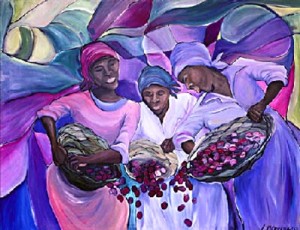

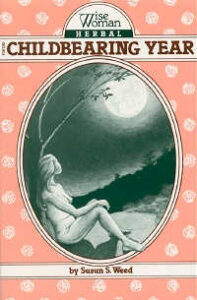
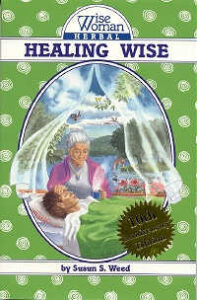

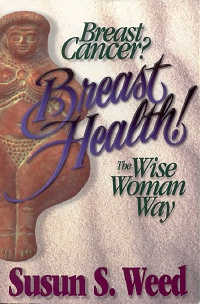
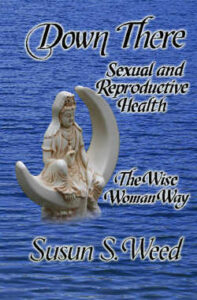
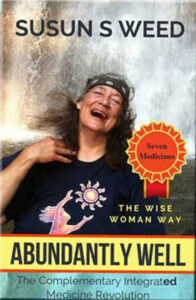



Thanks for all the good information. I will get started on some of them.
Joan
I suggest reading the book: “You Don’t Have to Live With Cystitis” by Larrian Gillespie,M.D.
Try no more than 1/4 tsp. of baking soda in a glass of water once a day and apply baking soda paste to inflamed area as well.
I make an extract formula for Cystitis which contains 2 parts Cornsilk, 2 parts Bearberry, and 1 part Buchu. It is taken 5 ml or 1 tsp 3 x’s daily but I usually start with 2 tsp for my very first dose. Although the infection will not be gone, you will feel realief as early as the very next time that you urinate. I also recommend an infusion of yarrow (prefereably fresh) drunk often. For supplements: Vitamin C-calcium ascorbate; avoid vitamins containing aspartate, Vitamin E 400 to 600 IU daily and Vitamin B6 300 mg daily. I get excellent results.